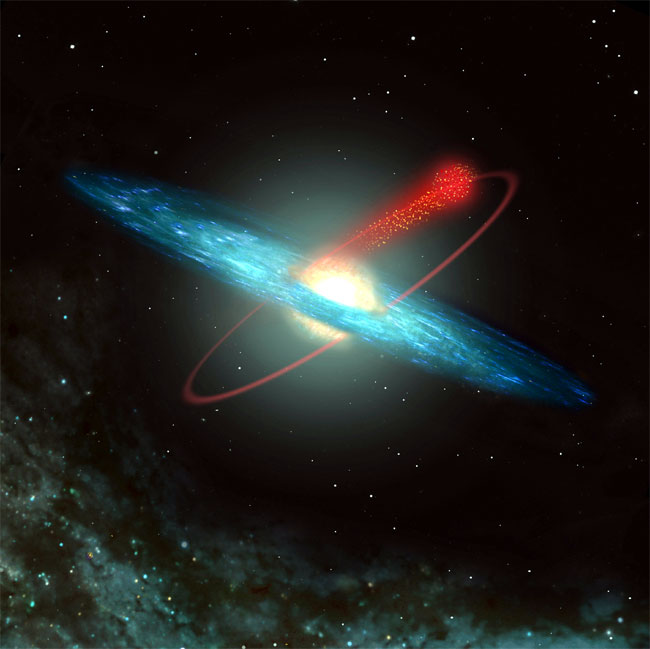
Call it a slip-up in stellar record keeping. A new survey finds that the globular cluster Messier 12 actually has about one million fewer stars than astronomers had long assumed.
Italian researchers made the discovery when they actually counted the stars in Messier 12 using the European Space Agency's Very Large Telescope in Chile.
Messier 12 is located about 23,000 light-years away in the constellation Ophiuchus. It is one of about 200 known globular clusters in the Milky Way. The number of stars in a cluster can range from 10,000 to more than a million.
Faulty assumptions
A rule of thumb in astronomy is that a star's brightness is closely associated with its mass. That is, a bright star will typically be more massive than a dim star.
Another assumption is that a typical globular cluster will contain many more small stars called red dwarfs than massive stars. For most clusters surveyed, the ratio is about four to one.
Red dwarfs are very dim stars with masses about a third that of our Sun and are thought to make up as much as 85 percent of the stars in our galaxy. Astronomers think the reason red dwarfs are so abundant is that they are much easier to form than their larger counterparts.
Breaking space news, the latest updates on rocket launches, skywatching events and more!
"The laws of nature are simply such that in a molecular cloud there are just a few big clumps and quite many more smaller clumps," said study team-member Guido De Marchi from the European Space Agency.
Combining these two assumptions provides astronomers with an easy way to calculate a globular cluster's mass even though the vast majority of its stars are very dim and hard to see. What they do is count the number of bright stars in a cluster and multiply by four.
"Say you see 25,000 massive stars, you infer that there will be 100,000 lighter ones, even if you don't see them," De Marchi said.
However, when the researchers had catalogued the brightness and color of about 16,000 stars in Messier 12, they found that the ratio of red dwarfs to massive stars was off. They estimate that the cluster has about one million fewer red dwarfs than astronomers had assumed.
Star tails and halos
The researchers think that Messier 12's now-missing stars were slowly shed over the cluster's 13-billion-year lifetime as it orbited the Milky Way.
Many globular clusters circle our galaxy in extended elliptical orbits. These orbits periodically take them through the central, densely populated region of our galaxy, called the Milky Way "bulge." The combined gravity from the bulge's stars is so great that small stars in passing clusters are ripped away.
"For stars at the periphery of the cluster, this gravitational pull [from the bulge] can be so strong that some of them are actually dislodged from their orbits and become unbound," de Marchi told SPACE.com.
Some of the cluster's shed stars are trailing Messier 12 as it goes around the Milky Way, forming what is known as a "tidal tail."
Other stars are believed to have suffered a different fate. A halo of very old stars surrounds the Milky Way; astronomers think that some of these stars are orphans that once belonged to Messier 12 and other clusters.
The finding will be detailed in an upcoming issue of the journal Astronomy and Astrophysics.
- Age Of Universe Hidden in Star Clusters of Milky Way
- Cosmic Orphans: Stray Stars Found Wandering Between Galaxies
- Astronomers Had it Wrong: Most Stars are Single
- Star Search Finds Neighborly Red Dwarf
Join our Space Forums to keep talking space on the latest missions, night sky and more! And if you have a news tip, correction or comment, let us know at: community@space.com.
Ker Than is a science writer and children's book author who joined Space.com as a Staff Writer from 2005 to 2007. Ker covered astronomy and human spaceflight while at Space.com, including space shuttle launches, and has authored three science books for kids about earthquakes, stars and black holes. Ker's work has also appeared in National Geographic, Nature News, New Scientist and Sky & Telescope, among others. He earned a bachelor's degree in biology from UC Irvine and a master's degree in science journalism from New York University. Ker is currently the Director of Science Communications at Stanford University.
